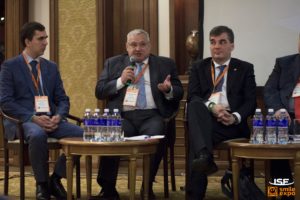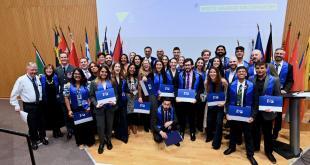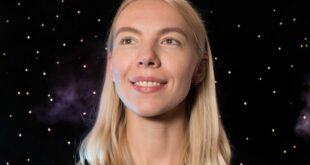
On 21 March 2018, InSpace Forum 2018, a large event dedicated to commercial space industry and the application of UAV’s, kicked off in Moscow. Participants discussed important legal aspects of the aerospace industry and shared experience in business management.
The international company Smile-Expo that organized the event states that the forum is aimed at the development of the industry, discussion of topical problems, and assistance to technology companies in the search for business partners.
This time, the forum’s conference was divided in two sessions, one dedicated to commercial space exploration, and the other – to UAVs. Each session consisted of speakers’ presentations and lively discussions.
Commercial Space Exploration
As part of the Commercial Space Exploration session, representatives of private aerospace companies discussed the peculiarities of collaboration with state-owned organizations and the development of the legislation in this field. Participants noted the need for introducing regulation for business so that private space exploration could rely on the protection of law. According to representatives of the businesses, all industry players including companies, research institutes, design bureaus, are ready for cooperation.
A standalone panel discussion focused on spacecraft insurance featuring representatives of insurance and private space companies as well as lawyers. They discussed types, conditions, and trends of spacecraft insurance, dwelled on reinsurance problems in foreign markets, and talked about sanctions in spacecraft insurance.
There were also presentations by speakers. Alexander Malinin, technical project manager at Dauria Aerospace, told about the development of the first Russian private Earth remote sensing microsatellite of high resolution. Head of MTI Aerospace Laboratory Denis Efremov spoke about plans on stratosphere tourism and commercial use of stratosphere flights. Deputy CEO at Terra Tech, Vyacheslav Butin, delved into space services for business.
UAV’s
The UAV’s session offered a panel discussion on the commercial use of drones. Representatives of private companies and laboratories discussed international practice of UAV regulation revealing the problems of flight regulation in Russia: if you want to pilot an UAV today, you need to file an application in the corresponding authorities a week prior to the flight and wait for the permit. Participants also reported that only 70 companies specialize in UAV’s in Russia, which is a very small number for such a large country.
Another panel discussion dealt with trends in remote sensing and Earth monitoring. It also featured representatives of private companies and design bureaus. They spoke about Earth remote sensing methods and the economic efficiency of every method. Separate attention was paid to technical details: panelists discussed the use of modern sensors in drones. Besides, they analyzed and made forecasts concerning the state of the UAV market.
In a separate presentation, head of MTI Aerospace Laboratory Denis Efremov spoke about the development of drones with defibrillators. He specified technical issues solved by the laboratory and juridical problems related to the use of drones. The director of the AEROHELP Institute of Air and Space Law, Oleg Aksamentov, also spoke about juridical issues. His presentation was dedicated to third party liability in Russia.
The break for networking was followed by two more presentations: CEO of Anisoprint Fedor Antonov told about composite materials in UAV’s, and the engineer of the Moscow Aviation Institute Andrey Kolpakov presented an UAV with an anisogrid constructive and force diagram.
Exhibition
Exhibitors brought many devices and services intended for the aerospace industry. For instance, the Moscow Aviation Institute displayed the abovementioned UAV with an anisogrid diagram. It looks like a tricopter with engines protected from all sides with strong rods.
SeaProject brought a laptop with three displays. Freespine showed a biokinetic spine exerciser that will help ISS astronauts to train before flights. Fora Robotics presented a robotic promoter, and Orient Systems demonstrated Russian geodetic receivers and GNSS chips.
Laboratory Astronomikon presented its services in the field of nanosatellite prototyping. Research and Production Center Small Satellites LLC presented its achievements and was ready to start partnerships with other aerospace companies. Inginiti spoke about its developments and offered services for building space structures using composite materials. Russian company Shooting With Air offered unmanned solutions for different industries, from geodetics to the oil and gas sector.
Pitch Session
InSpace Forum 2018 offered a pitch session for projects working in the aerospace field. Companies presented their products to receive feedback from experienced market players. The following projects were presented: training aerophotographic unmanned complex GeoDron;, engineering and technology integrator; exerciser for ISS astronauts; complex MISSIONER for digital aerial photography of highways with ground radar; multifunctional modular platform Sinergia, and solution for designing small spacecraft.
Once again, the InSpace Forum has shown that the Russian space industry is growing, contrary to popular belief. Moreover, it develops not only at the national level but also in the private sector. Identifying problems and key aspects that are important for the evolution of the aerospace industry is an integral part of the progress facilitated by InSpace Forum 2018.
 SpaceWatch.Global An independent perspective on space
SpaceWatch.Global An independent perspective on space




